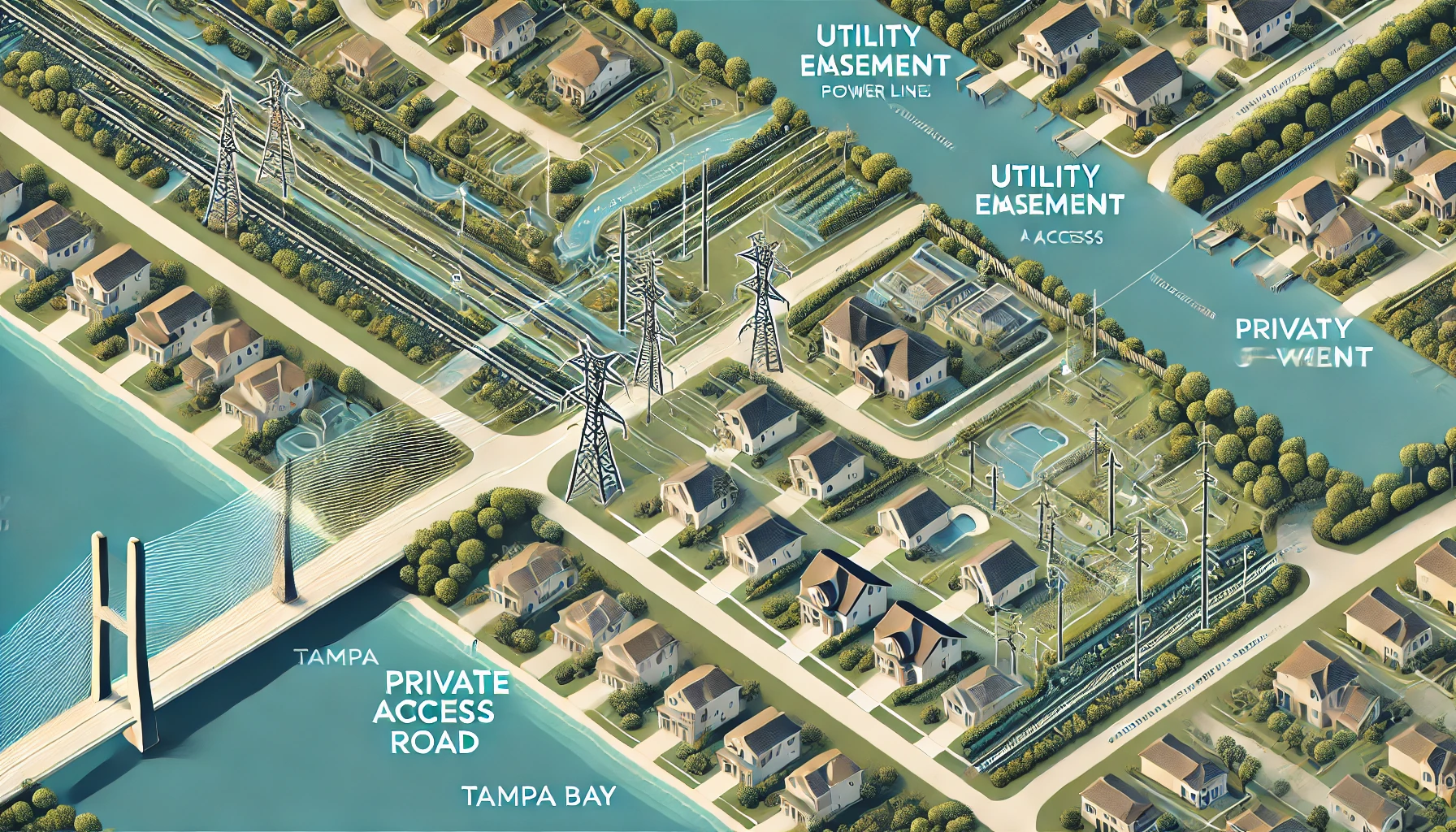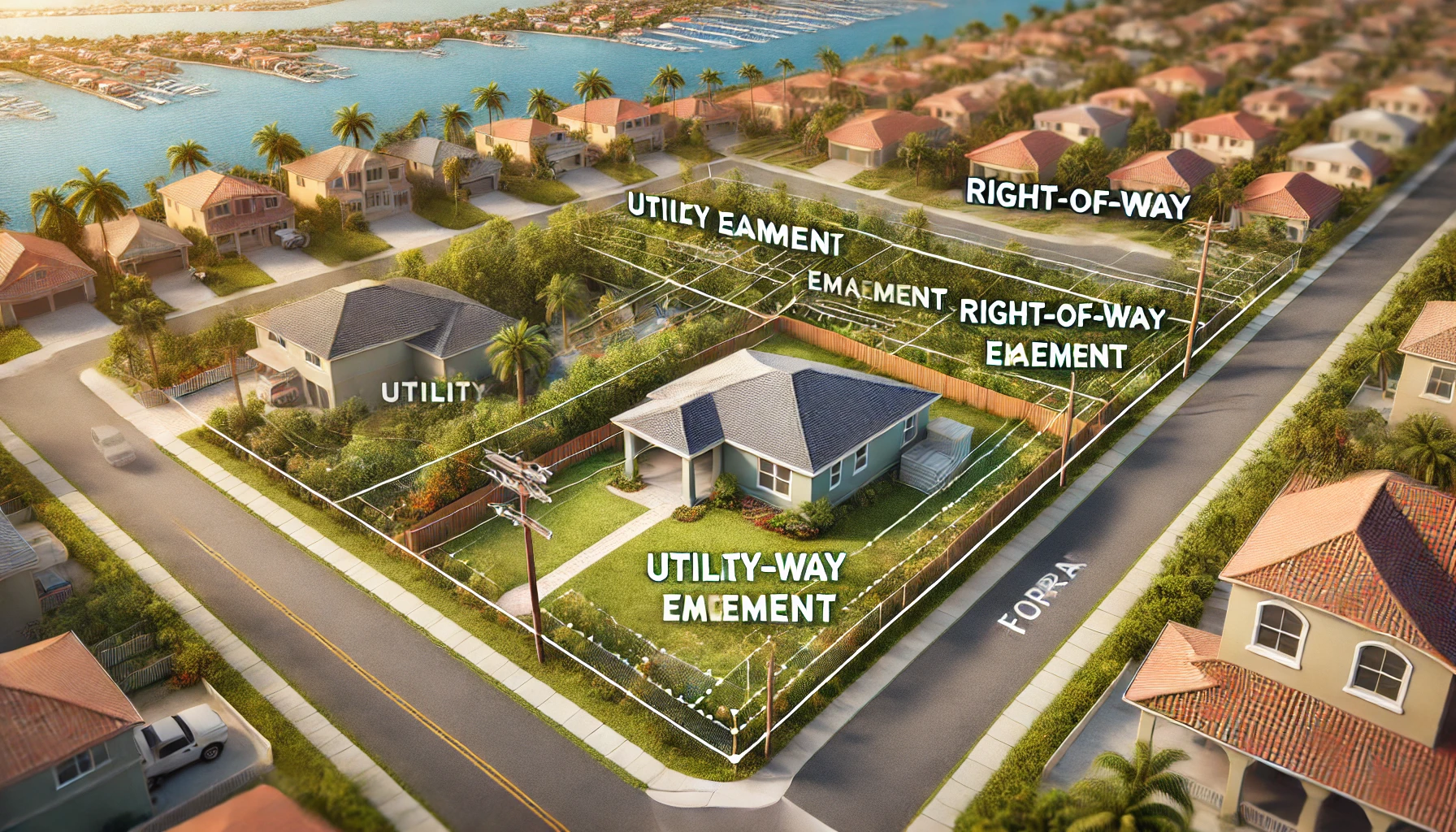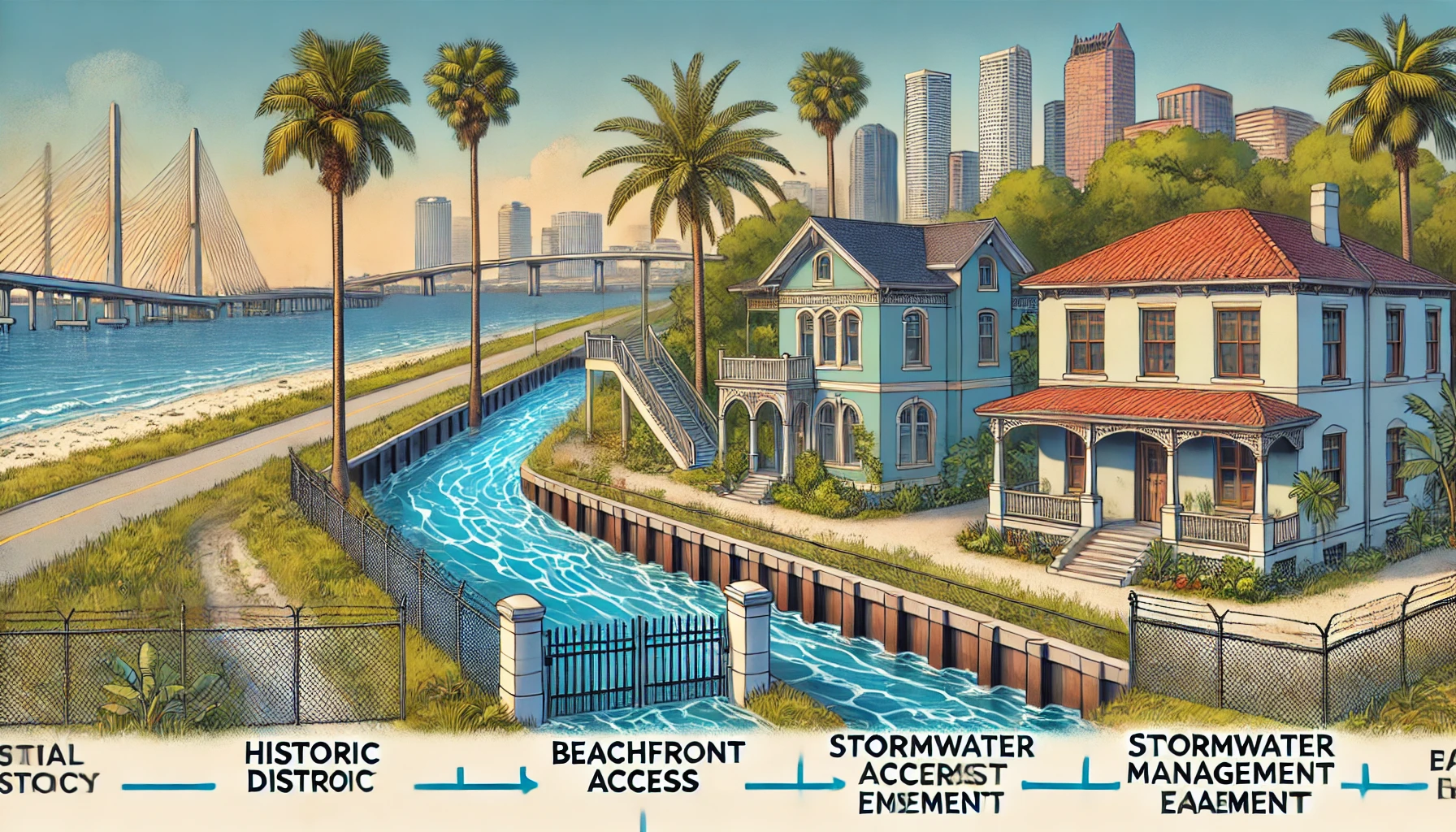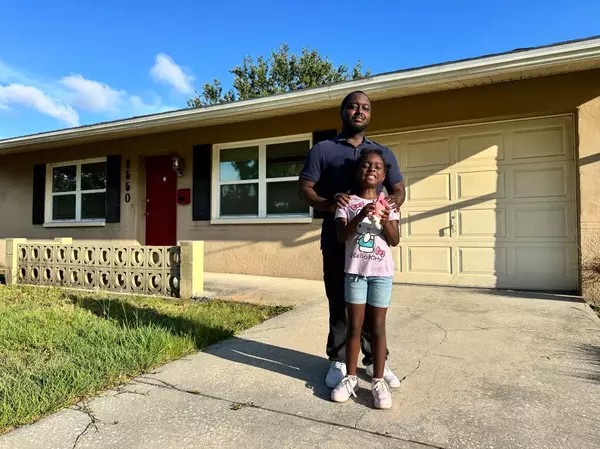Understanding Easements in Tampa Bay Real Estate: What Homeowners Need to Know
What is an Easement?
An easement is a legal right granted to a party (often a person, utility company, or government entity) to use a portion of someone else's property for a specific purpose. Easements are commonly used to provide access for utilities, public pathways, or other necessary services and do not transfer property ownership but rather grant limited use. Understanding easements is essential for Tampa Bay property owners, as they can influence property usage, resale value, and potential development plans.

Types of Easements in Tampa Bay
Easements come in various forms, each with specific functions and legal implications. Below are some common types of easements homeowners might encounter in Tampa Bay.
1. Utility Easements
Utility easements allow companies to access private land to maintain and install infrastructure such as electrical lines, water pipes, sewer systems, and communication cables. In Tampa Bay, where many older neighborhoods have well-established utility systems, these easements are essential for ensuring that utility companies can repair or upgrade their networks without disturbing homeowner property rights unnecessarily.
For example, a homeowner in South Tampa might have an electrical easement running along the back of their property. This easement allows the electric company to access its lines for maintenance or upgrades.
2. Right-of-Way Easements
Right-of-way easements grant permission for one party to pass through another's land. In Tampa Bay, right-of-way easements are commonly held by public agencies and are used for roads, sidewalks, and public paths.
A typical scenario might involve a public pathway along Bayshore Boulevard, providing pedestrian access along the waterfront. This right-of-way easement allows the city of Tampa to maintain the path, while neighboring property owners retain ownership of their land.
3. Private Access Easements
Private access easements, often referred to as ingress or egress easements, allow someone to enter or exit through a property, usually when there’s no other access available. This type of easement is common in rural parts of Hillsborough and Pinellas Counties, where parcels of land may be “landlocked” and can only be reached through a neighboring property.
For instance, a property in north Hillsborough County might require an easement to allow access from the main road, crossing through an adjacent lot to provide essential entry and exit points.

How Easements Affect Property Ownership in Tampa Bay
Easements can impact various aspects of property ownership, from land use to potential resale values.
Property Usage Limitations
Easements can restrict what a homeowner can do with parts of their land. For example, a utility easement running through a backyard may prevent the installation of a swimming pool, patio, or fencing in that specific area.
Potential Resale Value
Buyers are often cautious of properties with easements that restrict specific uses. In competitive real estate markets like Tampa Bay, an easement can affect buyer perception and the property’s resale value.

Common Easement Scenarios in Tampa Bay Neighborhoods
Understanding how easements might affect properties in Tampa Bay’s diverse neighborhoods can help current and prospective homeowners make informed decisions.
Scenario 1: Easements in Historic Districts
In areas like Ybor City and Hyde Park, homeowners may encounter easements that protect historic pathways or utility systems. These districts may have strict preservation guidelines, and easements are often put in place to protect the historical significance of certain structures or landscapes.
Scenario 2: Beachfront Access Easements
For properties along Clearwater Beach or St. Pete Beach, public beach access easements allow non-residents access to specific sections of the beach. While these easements ensure public access to Florida’s renowned beaches, they can impact homeowners’ privacy and security.
Scenario 3: Easements for Stormwater Management
Given Tampa Bay’s susceptibility to flooding and heavy rainfall, some properties may have easements dedicated to stormwater management. For example, properties near the Hillsborough River may have easements allowing the city to construct and maintain drainage ditches to manage flood risk during storm surges.

Protecting Your Rights: Navigating Easements as a Tampa Bay Homeowner
If you’re buying or currently own property in Tampa Bay, understanding any existing easements is essential. Here are some steps to help manage easements effectively:
- Conduct a Title Search: A title search can reveal existing easements that may affect property use.
- Consult a Real Estate Attorney: A local attorney specializing in property law can offer valuable insights into specific easements and their implications.
- Check with the County or City Planning Office: Local government offices can provide details about public easements on or near a property, especially in areas prone to flooding or located near city infrastructure.
Conclusion
Easements are a fundamental part of property ownership that Tampa Bay residents should be aware of. Understanding the different types, recognizing how they impact property use, and knowing how to navigate them can ensure you’re making the most informed decisions about your property investments.
Categories
Recent Posts










